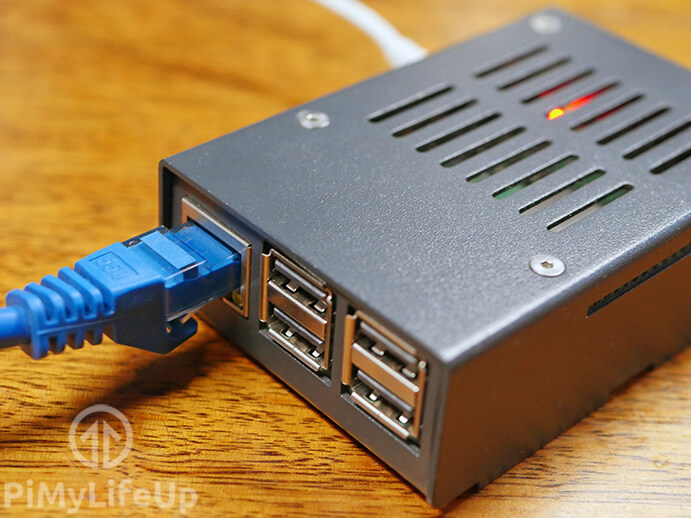Apache Tomcat is an open source Java servlet container that functions as a web server. A Java servlet is a Java program that extends the capabilities of a server. Although servlets can respond to any types of requests, they most commonly implement applications hosted on Web servers. Two popular web servers are Apache and IIS. Tomcat is a Java Servlet / JSP container that can also be used as a standalone web server. Apache, IIS and Tomcat are the most commonly used software for hosting WAP / web sites. Apache - Open-source, Free WAP / Web Server. Apache is a very professional open-source WAP / web server.
- Apache Web Server Windows 10
- Install Apache Web Server
- Apache Web Server Tutorial
- Apache Web Server Open Source Games
Install Apache Web Server
In this article, I will show you how to install the Apache web server on Ubuntu 20.04. This requires root or administrative privileges, so log in to the system via root.

Step 1: Upgrade Your APT
As always, first, update and upgrade your APT.
Step 2: Download and Install Apache
Next, download and install the Apache web server from the Ubuntu software repository by executing the following terminal command.
Step 3: Verify Apache Installation

To verify whether Apache has installed, check the server status. When the installation is complete, the apache2 server will start automatically.
Step 4: Enable Firewall Settings
Now, you should enable the firewall settings for the Apache webserver. To do this, use the UFW command to allow Apache traffic on Port 443 and Port 80 via the following terminal command.
Step 5: Verify Changes
You can verify this change by checking the firewall status with the following terminal command.
Step 6: Check If Apache Is Working
Check to see whether Apache is working correctly on your system. Open a web browser on your Ubuntu machine, open a new tab, and type the following URL into the URL bar. Be sure to replace the IP we have used with your own machine’s IP address.
Figure: Apache service running in a browser window. Soc pc-camera provider cameras.
Step 7: Set Up Virtual Host
Now, you are ready to set up a virtual host using the installed Apache web server. Apache contains a test virtual host that is enabled by default when it is installed. Hosting a single website is easy; you just have to upload the website content in its configuration file under the “/var/www/html.” The path to this configuration file is defined as follows.
Figure: Default configuration file opened in gedit editor.
Step 8: Create Domain Name
If you are hosting multiple websites, use the following command to create a new virtual host configuration file for every new website. The domain name created in this test example is www.example.com; this can be replaced with your desired domain name.
Step 9: Create New Directory File
Create a new file in the directory named “index.html” and paste the following content into this file.
<htmllang='en'dir='ltr'>
<head>
<metacharset='utf-8'>
<title>Welcome to example.com</title>
</head>
<body>
<h1>Success! example.com home page!</h1>
</body>
</html>
Figure: New index.html file with site content inside.
Save the file and close it. Change the file permission options with the following terminal command.
Step 10: Create Document in Text Editor Drivers velleman instruments port devices.
Open your favorite text editor and create this file in “/etc/apache2/sites-available” location. I am using the gedit text editor.
ServerName example.com
ServerAlias www.example.com
ServerAdmin [email protected]
DocumentRoot /var/www/example.com/public_html
<Directory /var/www/example.com/public_html>
Options -Indexes +FollowSymLinks
AllowOverride All
</Directory>
ErrorLog ${APACHE_LOG_DIR}/example.com-error.log
CustomLog ${APACHE_LOG_DIR}/example.com-access.log combined
</VirtualHost>
Figure: example.conf file opened with gedit editor.
Step 11: Link Configuration File
Link this configuration file to the a2ensite utility by executing the following terminal command.
To check for a syntax error in the configuration file, execute the following command.
Step 12: Restart Apache
Now restart Apache service, open your web browser, and type the following URL into the URL bar.
Figure: example.com opened in a browser window.
Apache Web Server Windows 10
Uninstalling Apache Web Server
You can completely uninstall the Apache web server via the following terminal commands.
Conclusion
This article covered how to install the Apache web server, configure firewall settings for Apache, set up virtual hosts on Apache web server, and uninstall Apache.
Apache HTTP server
The Apache HTTP Server, an open-source web server developed by the Apache Software Foundation. The Apache server is used to host web content. It responds to requests for content from web browsers, such as Internet Explorer and Firefox.
Installing Apache
Install Apache Web Server
To configure your system as a web server, begin by installing the httpd software package.

Use the systemctl utility to enable the HTTP daemon to start at boot time and also to start the daemon immediately.
Configuration files
The main configuration file for Apache is /etc/httpd/conf/httpd.conf. An auxiliary directory, /etc/httpd/conf.d, also exists to store configuration files that are included in the main configuration file. Configuration files that load modules are in the /etc/httpd/conf.modules.d directory.
New apachectl subcommands in CentOS / RHEL 7
Apache Web Server Tutorial
A new apachectl sub-commands are available in CentOS / RHEL 7. The following example uses the configtest subcommand to check the configuration for possible errors.
Use the graceful subcommand to reload the configuration without affecting active requests.
Configuring Apache
The main configuration file for Apache is /etc/httpd/conf/httpd.conf. Apache runs as installed, but you can modify configuration directives in this file to customize Apache for your environment. Some of these directives are described in the post below.
Testing Apache HTTP server
You can confirm that Apache is working by pointing a browser on the local system to http://localhost as shown in the picture below. You can also point a browser to http:// followed by the IP Public address of the server or the ServerName directive that you specified in the configuration file. The test page shown below confirms the functioning Apache HTTP server.
To test the display of actual content, create an HTML file named index.html in the directory specified by the DocumentRoot directive (the default directory is /var/www/html). Apache automatically displays the index.html file in this directory, if it exists.
Apache Containers
Apache Web Server Open Source Games
Apache containers are special configuration directives that group other directives. The containers use XML-style tags, meaning that the beginning of a container is <name> and the end is </name>. An index of all the container directives is available at http://httpd.apache.org/docs/current/sections.html. Refer the post below to get the most commonly used apache containers. Sunplusmm modems driver.
Apache Virtual Hosts
Apache supports virtual hosts, meaning that a single Apache server can respond to requests directed to multiple IP addresses or host names. Each virtual host can provide content and be configured differently.
You can configure virtual hosts in two ways:
1. IP-based Virtual Hosts (host-by-IP)
2. Name-based Virtual Hosts (host-by-name)

host-by-IP
With host-by-IP, each virtual host has its own IP address and port combination. The Apache web server responds to the IP address that the host resolves as. Host-by-IP is required for serving HTTPS requests due to restrictions in the Secure Sockets Layer (SSL) protocol.
host-by-name
With host-by-name, all virtual hosts share the common IP address. Apache responds to the request by mapping the host name in the request to ServerName and ServerAlias directives in the particular virtual host’s configuration file.
Use the <VirtualHost host-name> container to implement virtual hosts. After the first VirtualHost is defined, all of the content served by Apache must also be moved into virtual hosts.
The following example is a simple name-based virtual hosts configuration:
